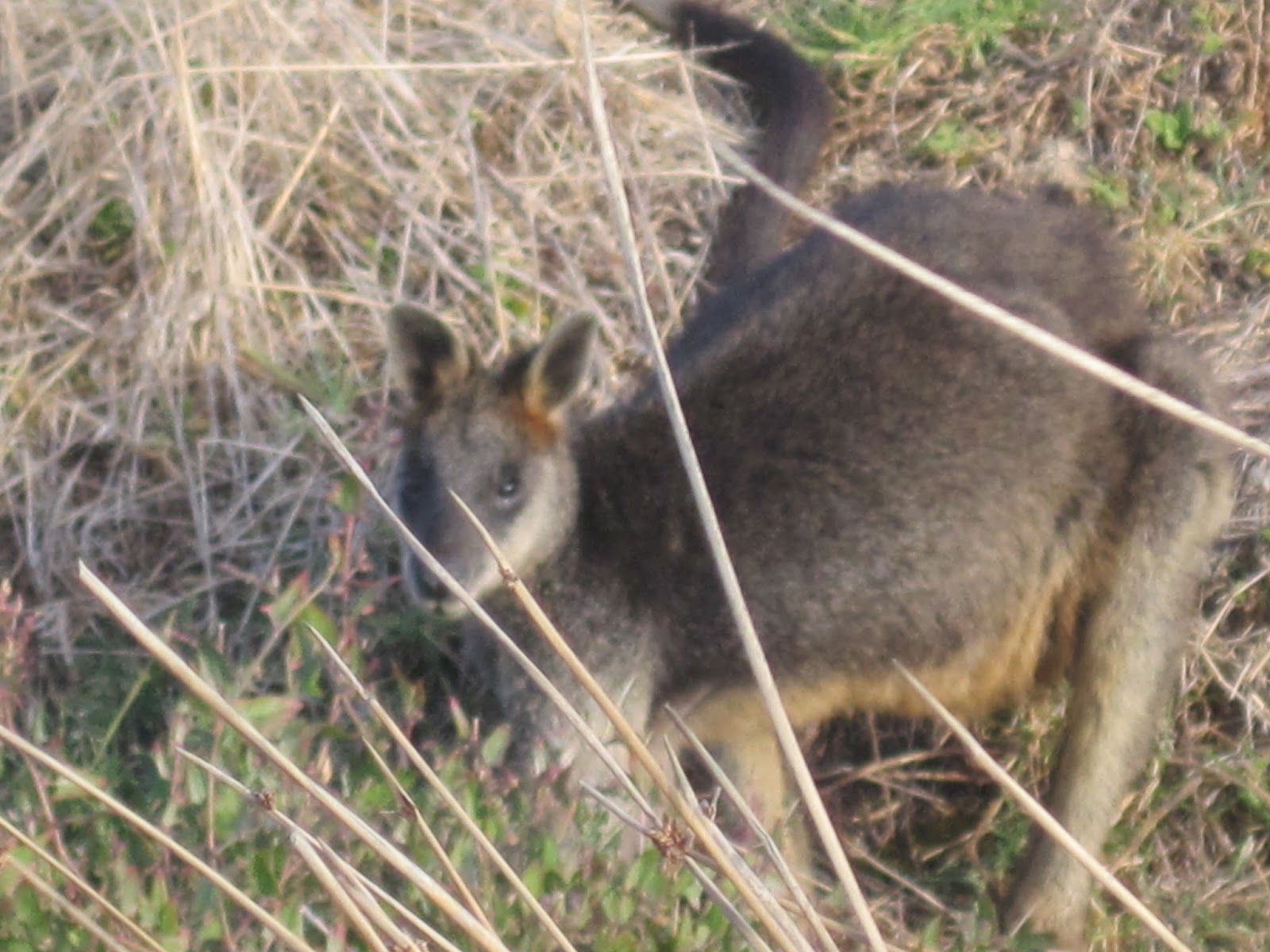Mornington Peninsula
You see the penguins at night as they come on shore from their day of fishing. This part of Australia draws to a point - a peninsula - called the Mornington Peninsula. This peninsula is home to a huge horse industry (race horses) and wine. So, we had a chance to see the peninsula a bit and visit another winery before checking out the penguins.We rented our car in the morning and drove down the coast on the Nepean Highway along the Port Phillip Bay (where Melbourne sits). Closer to Melbourne are several popular coastal suburbs (St. Kilda, Brighton, Hampton, Frankton, Mornington, etc). Many had some great beaches and they all look back toward Melbourne. Obviously, the closer to Melbourne the suburb sits, the better the view back to the big city. Here is the beach and view of the city from St. Kilda - only a few kilometers away.
And here is the beach and view of the city from Mornington - 35 miles away.
Many of these towns are wealthy suburbs (at least around the coast). K and I were impressed with many of the houses along this coast. K has picked out a few that she would like to call home. If anyone has a spare million+ dollars and would like to purchase it for her, let me know.
Inland from the coast, K and I were struck by just how similar to California the area seemed.
Penguin Parade
Phillip Island sits a few kilometers to the east of the Mornington Peninsula. A bridge takes you on to the island. We had dinner on the island and then headed to the wildlife reserve. It turns out that it is home to more than penguins. There are quite a few seals, koala, wallaby and other wildlife that share the island and reserves on the island. We saw several wallaby.The Little Blue Penguins are about 1 foot tall and their backs are covered with bluish feathers - thus their names. As I indicated, they return from the ocean every evening after sunset to their nest sites. The population of penguins is estimated at 32,000. So that makes for a lot of penguins coming out of the ocean and heading for the hills all within about an hour or two.
The reserve is managed by a quasi government organization. You can find information on the park and the organization here: http://www.penguins.org.au/. They are trying to maintain the animals - in particular the penguins - on the island. They have saved the little penguins in this part of the world. During the British rule and early Australian control, the penguin population was reduced to a few hundred. It was thought by scientists that the population was too decimated to recover. This organization was granted permission in 1996 to save the penguin and return the island to its natural state - as much as it could. They not only succeeded, but have brought the population back to what they think is pre-European populations. In fact, they believe the colony of penguins is as big as it can be right now given the food supply.
About 3,000-4,000 people are allowed into the reserve to see the penguins return each night. These folks see the penguins from bleacher seats on the beach while the beach is lit with stadium lighting. This nightly event of a few hundred penguins coming into one spot on the beach is called the "penguin parade." However, 10 people per night can purchase special tickets that allow you to take a tour to a more remote beach and see the penguins up close - with night vision goggles and a personal guide. There are fewer penguins at this location (fewer than 100), but you are seeing them only yards away. K loves wildlife - the cuter and more vulnerable, the more they are near and dear to her heart. So as one of my gifts for her for this trip was to get to be part of the 10 people group.
You set up on the beach around dusk and then wait. Thankfully, the night was warm and dry for us. Perfect conditions to see the penguins - we were told by the guide. Then, about 30 minutes after sundown, a little dark spot forms on the water and up emerge the first group of penguins. Usually in small groups, but sometimes in a pair or single penguin come up out of the ocean. They quickly check out what is on and above the beach (birds of prey can pick off a penguin of this size) and then make a dart (or more like a waddle) for the hills above the beach. It is something to watch.
Unfortunately, no pictures are allowed - the bird's eyes are too sensitive to flashes. So you'll have to go to the web site above or to Wikipedia here: http://en.wikipedia.org/wiki/Little_Penguin to see a picture of one. Or...K decided she just must have one, so she purchased one in the gift shop - so you can see hers up close!
The selling point of our little friend was that the proceeds go to save penguins caught in oil slicks around the world.
It was a fun day and a fun event. Again, an event that will allow me to remember this trip for the rest of my life.












No comments:
Post a Comment